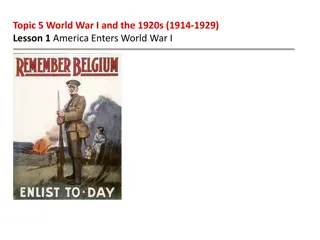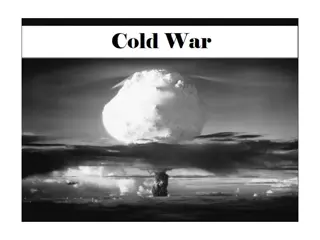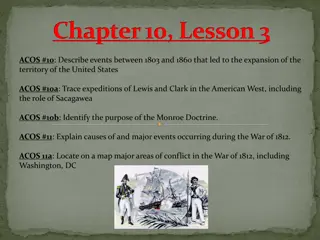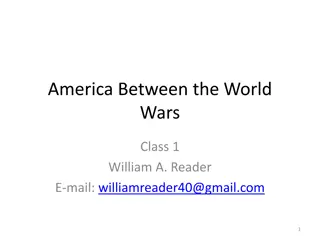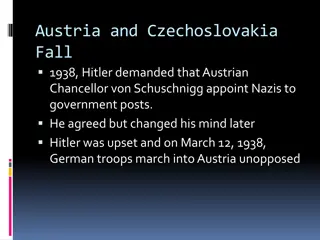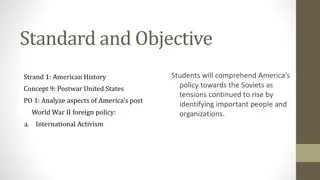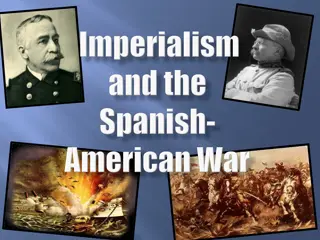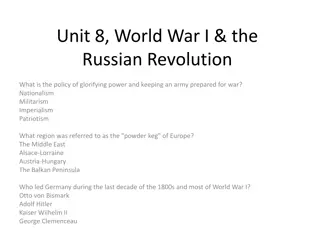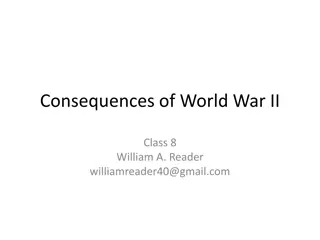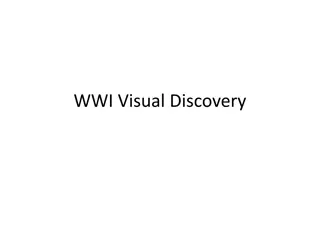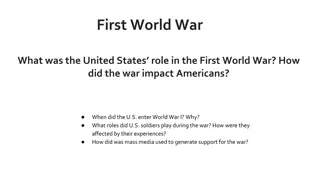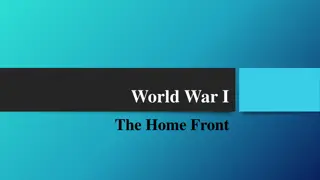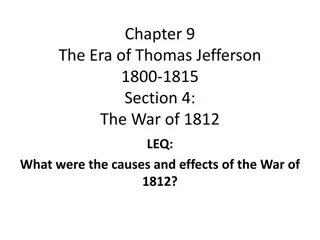World War II: America's Impact and Legacy
The content discusses various aspects of America's involvement in World War II, including key events, societal changes, technological advancements, and the impact on different communities such as African Americans, Native Americans, and Japanese Americans. It also touches upon significant moments like D-Day, the Manhattan Project, and the decision to drop atomic bombs on Hiroshima and Nagasaki, shedding light on the complexities and consequences of the war.
Download Presentation

Please find below an Image/Link to download the presentation.
The content on the website is provided AS IS for your information and personal use only. It may not be sold, licensed, or shared on other websites without obtaining consent from the author. Download presentation by click this link. If you encounter any issues during the download, it is possible that the publisher has removed the file from their server.
E N D
Presentation Transcript
www.Apushreview.com America In A World At War
After Pearl Harbor, the Japanese attacked US bases in Manila Battle of Midway, US was victorious By mid-1943, US gained an edge in the Pacific theater Delays in a French invasion upset Stalin The Soviets had the most casualties 20 million! Leaders of the Soviet Union felt the delay of an invasion was done so USSR could absorb the most casualties Holocaust: 11 million deaths 6 million Jews US had some knowledge early on in the war St. Louis US turned away 1,000 escaped Jews, even though they had room under the quota system
The war ended the Great Depression Federal spending increased drastically Shortage of consumer goods = increased savings 15 million men and women were part of forces Increased need for labor Major unions did not strike Smith-Connally Act unions had to wait 30 before striking 2 ways the government paid for the war TAXES! War bonds War Production Board: Purpose was to have broad economic powers In reality, did not have as much power
Technology in the war: Car assembly lines turned into military assembly lines Radar and sonar improved dramatically Americans During The War African Americans: Generally supported the war hoped for more rights A. Philip Randolph proposed a demonstration in DC Fair Employment Practice Commission: could investigate discrimination in war industries Large migration of blacks from the South Native Americans: Code-talkers Mexican Americans: Bracero program: Mexican workers came to the US Zoot Suit Riot: conflict between American sailors and young Mexicans in Los Angeles
Women and children in the war: Women in the workforce increased by 60% Rosie the Riveter Many children became latchkey kids 1/3 of teenagers were employed Japanese Americans: Executive Order 9066 relocation of Japanese from the West Coast Korematsu v. US upheld Internment Camps Check out my video in the description
D-Day: June 6, 1944: Invasion at Normandy Dwight Eisenhower The Soviets pushed the Germans back, allowed them to occupy Eastern Germany Play a key role after the war Manhattan Project: Led by Robert Oppenheimer, the US developed nuclear weapons Check out Rush s The Manhattan Project Hiroshima and Nagasaki: US dropped two atomic bombs 100,000s of deaths Why did the US drop the bombs? Many, but to save American lives
The war was paid by taxes and bonds Women worked in large numbers A. Philip Randolph Zoot Suit Riots Korematsu v. US Truman dropped the bombs to save lives
Subscribe to my channel Press the Like button Questions? Comments? Ideas for videos? Leave in comments SUBSCRIBE TO ADAM NORRIS!




